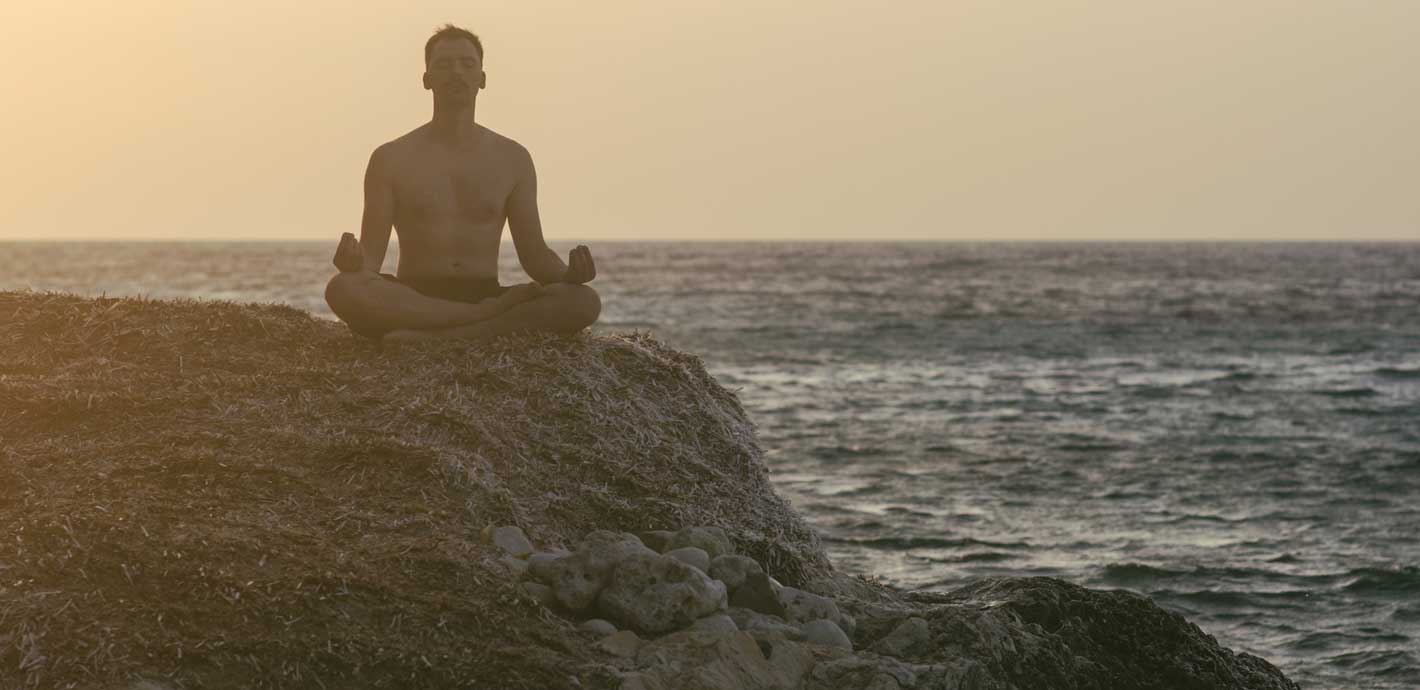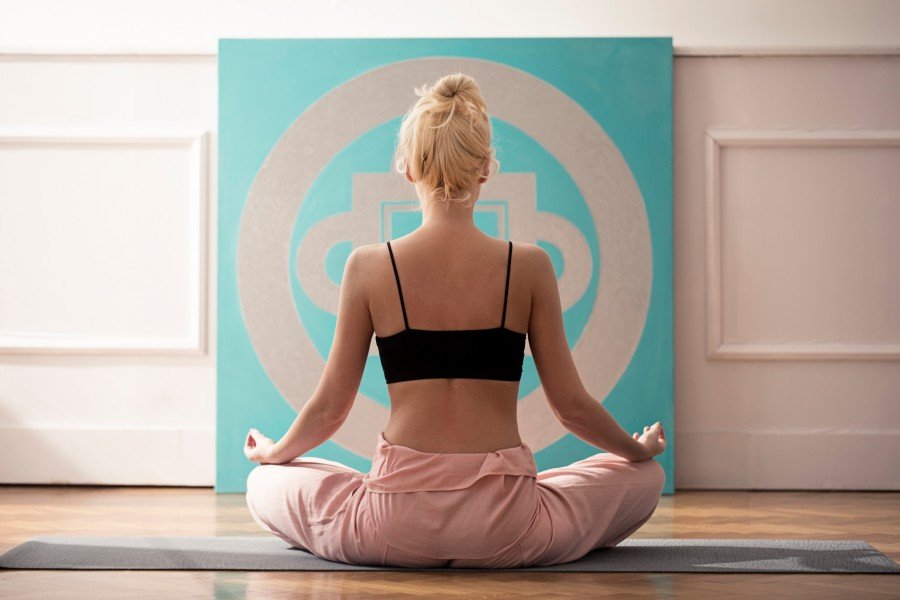To begin a meditation practice is to unfold into a rich new realm of experience. Through an investigation of sensations, thoughts, and the nature of mind, the practitioner is invited into intimacy with his or her experience, and, transitively, the experience of others. This can be a tremendously rewarding and sometimes challenging process. It is therefore very helpful to take up practices that are reliable, that have frameworks to hold the practitioner and ease her into subsequent stage stages of stability and insight. Before beginning meditation, it is helpful to examine, understand, and slowly gain confidence in the framework and method of your practice. If the ultimate goals are ease, insight, kindness, and fearlessness then it seems valuable to take up methods that have produced this result in others.
Whether or not you are religious, the Buddhist approach to meditation may provide a helpful framework for contemplation. The Buddha was a supreme meditator and his instructions have been examined and practiced for thousands of years. Of his own methods, he said, “O monks, just as a goldsmith tests his gold by melting, cutting and rubbing, sages accept my teachings after full examination, and not just out of devotion.”
This spirit of responsible inquiry is important to keep in mind, even for new or casual practitioners. Amid the many techniques available in the Western world, it’s sometimes surprisingly difficult to determine the reliability of the meditation methods. Because Buddhist mind-training techniques have survived and been rigorously tested for over 3,000 years, they provide a rational place to begin an investigation into contemplative practice. This is not to say that other methods aren’t valuable, or that one needs to be Buddhist to meditate; it’s simply to acknowledge that a lot of effort has been exerted to create secure, accessible frameworks for the practitioner.
The following meditation techniques come straight from the heart of traditional schools of Buddhism. Some of these practices can be found in other modern approaches to meditation, but they’re presented below in their classical forms. Read on to learn how to test them and gain a better understanding of the traditions that produced them.
Body Scan
This meditation technique is practiced within many schools of Theravada Buddhism. As a whole, Buddhism holds that we are deeply habituated to immediately respond with aversion, attachment, or neutrality to any sensation that arises within our experience. Pain, pleasure, heat, cold, buzzing, rigidity, tightness, looseness, numbness—any of the multitude sensations that might blossom beget a conditioned response. One purpose of practicing body scans is to become comfortable observing ours sensations dispassionately, the way a scientist might watch cells divide beneath a microscope. This provides insight into the nature of our physical and mental reactivity.
To practice this method, first compose your body. Sit in a cross-legged meditation posture with your rear slightly elevated on a cushion so that both legs are in contact with the ground, or sit upright in a chair. Alternatively you can kneel on a soft surface with your buttocks resting on a cushion and your legs on either side of that cushion. Regardless of how you sit, keep your spine straight, as if someone is gently tugging a string attached to the top of your head.
Take three deep breaths in through the nose and out through the nose. Then, without controlling the breath, bring attention to the air entering and exiting your nostrils. Be aware of the sensation of air passing into and out of your nose.
After a few minutes, bring your attention to the top of your head and notice the presence of your skull. Slowly scan downward, observing the sensations of your face, such as tightness or looseness around your eyes, the feeling of your lips, your cheeks. Continue to draw attention downward, observing any activity or lack of activity within your shoulders, your biceps, your forearms, and your hands.
Move slowly and clearly into each part of the body. Proceed through the torso, noticing the rise and fall of your chest, the sensations of the back, the abdomen, and the hips. Observe in a non-judgmental yet focused and relaxed way. Move through the legs, all the way to the toes, and then reverse the process, going from the toes back to the head. If you become distracted by thoughts, simply pick up where you left off. (Listen to a guided meditation that leverages this technique.)
As you practice, look carefully at how sensations arise and pass. Notice the complex and multi-layered aspects of a given sensation. If tension or pain arises, look directly at that pain and observe its constituent parts, allowing the various tones of feeling to blossom and dissipate. There may be emotional material connected with somatic experience. Observe emotional activity with kind dispassion, letting it arise and dissipate in clear and gentle awareness. Observe where a sensation comes from and where it goes.
If you want to examine this practice further, 10-day S.N. Goenka vipassana retreats employ a similar technique. The retreats are usually free and take place consistently all over the world. Also,Thanissaro Bikkhu, an American Theravada practitioner offers free talks for further study of Buddhist philosophy and other Theravada meditation techniques.
One-Pointed Quiescence Training
The Kagyu school of Tibetan Buddhism, sometimes called the “Practice Lineage,” presents several systematic approaches to mind training. One aspect of these systems is to intentionally train in mental stability and flexibility as a support for insight. Practitioners utilize different objects of attention to eventually produce an unwavering, hyper-refined state of awareness, called “shamatha.”
As a beginner it’s helpful to use a tangible physical object, such as a flower or a stone. Place the object a few feet in front of you. Sit upright in a chair or cross-legged on a cushion with your back straight and chin slightly retracted. Some teachers say that it’s helpful to give yourself permission at this time to become calmer, kinder, and clearer. This aspiration is a powerful support for training. With eyes open, rest your attention gently on the object. Allow your body to relax as you rest your gaze on the object. When the mind drifts into fantasy or distraction, gently return your attention to the object.
It is ineffectual to do this practice if you approach it like you are taking an exam or exercising in the gym, so notice if you are bringing a conquering attitude to the training. If so, remind yourself to remain relaxed but clear, and readjust your motivation toward kindness. Don’t try to dominate the support object, but stay gentle, upright, and at ease in your attention.
In the beginning you can practice like this for intervals as short as five minutes. As stability develops, some teachers suggest alternating between keeping attention on the object and then resting openly. For example, you can spend a few minutes attending to the object, and then raise your eyes into the space in front of you and relax as if you’ve just come to the summit of a mountain after a long hike. Sit openly for a minute or two, gently at ease. Then, return one-pointedly to your object. Lama Dzimpa, a teacher in the Karma Kagyu tradition, advises practicing short sessions many times.
There are numerous resources that can help you dive deeper into this practice. Seeking out a meditation master is of course of tremendous benefit, but instructions for beginners are also outlined in many Buddhist books. A particularly approachable and thorough text is The Four Immeasurables by Alan Wallace. This book offers detailed instruction on calm-abiding training and how to apply it to swiftly cultivate the positive mind states of loving-kindness, compassion, empathetic joy, and equanimity. Renowned meditation master Mingyur Rinpoche also provides detailed meditation instruction and teachings in this tradition through YouTube.
Space Making
This method of practice is often taught by Kyabgon Phakchok Rinpoche, a meditation master of the Taklung Kagyu lineage, and encourages a sense of expansiveness. It can be practiced at any moment, in any position (though maintaining an upright and relaxed posture is supportive), and is therefore particularly helpful for people who have a hard time finding time to sit down on a cushion.
Simply bring attention to the space around you, recognizing objects within that space—the ceiling, cars, trees—as part of space, rather than as discrete entities dividing it. Feel the space in front of you, behind you, to the right of you, to the left of you, and especially below you. If you are in a room, you might remind yourself that the walls are part of space, as space extends infinitely in every direction. Perhaps you have family and friends thousands of miles away; they are in this very space and are this very space. It isn’t necessary, however, to think to deeply about this or try to cultivate a particular state of attention, simply turn your attention outward and recollect this natural openness. (Related: Learn how to use this practice as a way to manage emotional eating.)
While this practice may sound esoteric, the effect is quite noticeable if you make a continuous effort. It may take 10 or 20 different practice sessions of turning outward to feel a sense of ease, but at some point you will begin to recognize that vastness, and you may experience a sensation of opening in the chest, as if you can breath more easily. Some people also become tired. If this happens it’s actually a sign that you’re letting go of some of the rigid grasping that compartmentalizes your experience, spatially and mentally, and are finally feeling how exhausted you are. Rinpoche says that if you become tired, just take a nap. “After practicing in this way your nap will be so much more restful,” he says. (Do you have a question for Rinpoche? You can ask him for advice or insights on any topic here at Sonima.com.)
You can do this practice at any time—at your computer, walking down the street, or buying groceries. It’s more of a reminder of the immediate vastness of this very moment than a difficult cultivation.
Similar and more complex forms of meditation can be found in the book Open Heart, Open Mind by Tsoknyi Rinpoche. Among the many Western teachers of Tibetan Buddhist traditions, Lama John Makransky offers very accessible teachings and is one example of the power of authentic lineage in the West.









Comments (0)